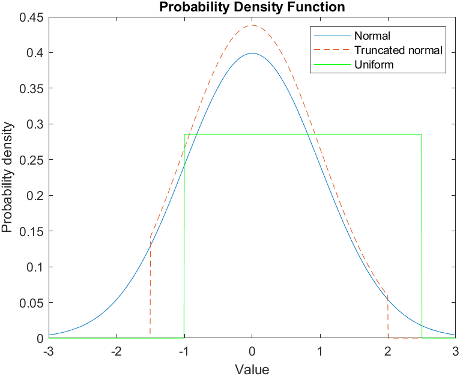perturbations
Syntax
Description
perturbs = perturbations(obj)perturbs, defined on the
object, obj. The returned perturbs lists all the
perturbable properties. If any property is not perturbed, then its corresponding
Type is returned as "Null" and its corresponding
Value is returned as {Null,Null}.
perturbs = perturbations(obj,property,'Selection',values,probabilities)property perturbation offset drawn from a set of
values that have corresponding
probabilities.
perturbs = perturbations(obj,property,'TruncatedNormal',mean,deviation,lowerLimit,upperLimit)property perturbation offset drawn from a normal
distribution with specified mean, standard
deviation, lower limit, and upper limit.
perturbs = perturbations(obj,property,'Custom',perturbFcn)perturbFcn, that draws the
perturbation offset value.
Examples
Input Arguments
Output Arguments
More About
Version History
Introduced in R2022a
